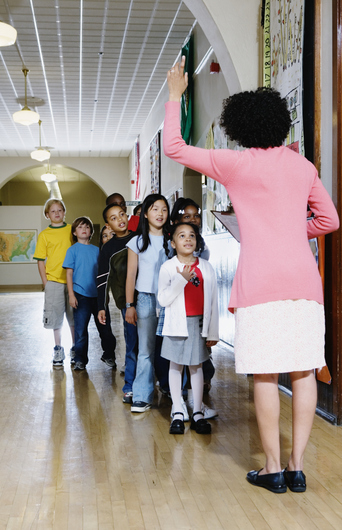Principals & Teachers Are First Line of Defense for School Safety
Ask yourself, "Do I feel prepared if an incident occurred at my school?"

We have to keep in mind that there are no locks or security checks that can protect all our schools from all violence at all times. When an individual is determined to commit a violent act, there is very little anyone can do to prevent the crime.
It is often school staff who take action to help save lives once again which highlights the reality that principals, assistant principals, teachers and school staff are the first line of defense for school safety.
It is critical that we instinctively trust our judgement and team members, rather than just react to a school shooting, human-caused incident, or natural disaster that could impact a school or community. Studying, reviewing and practicing the plans is a must for the safety of our our children. It's our job to keep our children safe so then can learn!
No one knows if or when funds or grants will be available to support more school safety programs. No one knows if school budgets or funding can continue to support on-going emergency preparedness programs and technologies. There are no easy answers or quick fixes, and yet we hope that the information and data gathered from the Safe to Learn Pilot Project at Lamar Consolidated Independent School District Pilot Study and the Safe to Learn Project may help provide fee or affordable solutions to support emergency preparedness projects for principals, assistant principals, teachers and staff.
School Incidents can be over in 8 minutes to a few hours - Are you prepared?
Fifteen died during the Columbine High School massacre in 1999 and it was over in 49 minutes. It was reported that the first shots fired on April 16 , 2007 by a gunman at Virginia Tech University killed two people were around 7:15 AM. Approximately 2 1/2 hours later, the shooter had wounded 17 people and killed 31 others, including himself. The shootings at Virginia Tech University came 8 years later in the same week in April, as the shootings at Columbine on April 20, 1999.
The December 2012 Sandy Hook Elementary School massacre was one of the deadliest school shootings in U.S. history and one of the deadliest mass school shootings around the world. No one will ever really understand why 20-year-old Adam Lanza woke up on December 14, 2012 and went into his mother’s bedroom and shot her, then drove to Sandy Hook Elementary School, and it was reported that he forced his way into the school by shooting out a window. Within 8 minutes, he killed 20 children, six adults and then killed himself. It was reported that the teachers at Sandy Hook Elementary locked their doors and ordered children to huddle in corners, duck under their desks or hide in closets as shots reverberated through the building.
After the Columbine school shootings in 1999 and the terrorist incident on September 11, 2001, both the U.S. Department of Education and Homeland Security invested millions of dollars to help schools develop safety plans and install technology designed to keep children safe and to assure that drills and exercises take place monthly so all students and staff can understand what they need to do during any type of natural disaster or human-caused incident. These efforts and programs have made a huge difference, yet funding has been cut and in some districts, almost eliminated!
No one knows if or when the next school incident will take place. And no District is certain if or when funds or grants will be available to support more school safety programs. No one knows if school budgets or funding can continue to support on-going emergency preparedness programs and technologies. There are no easy answers or quick fixes, decide today what you can do to support emergency preparedness projects at schools within your community.
